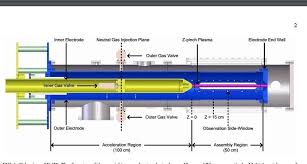
Breaking News
 Tennessee Sues Roblox, Says Game is a 'Gateway for Predators' Targeting Children
Tennessee Sues Roblox, Says Game is a 'Gateway for Predators' Targeting Children
 Kushner and Witkoff Reportedly Draft $112B Plan to Turn Gaza Into 'Smart City'...
Kushner and Witkoff Reportedly Draft $112B Plan to Turn Gaza Into 'Smart City'...
 Christmas in Venezuela: What It Was Like After Socialism Destroyed the Country
Christmas in Venezuela: What It Was Like After Socialism Destroyed the Country
 Can AI Build Your Home? | From #460 Ryan Fink & Ty Frackiewicz | The Way I Heard It
Can AI Build Your Home? | From #460 Ryan Fink & Ty Frackiewicz | The Way I Heard It
Top Tech News
 Perfect Aircrete, Kitchen Ingredients.
Perfect Aircrete, Kitchen Ingredients.
 Futuristic pixel-raising display lets you feel what's onscreen
Futuristic pixel-raising display lets you feel what's onscreen
 Cutting-Edge Facility Generates Pure Water and Hydrogen Fuel from Seawater for Mere Pennies
Cutting-Edge Facility Generates Pure Water and Hydrogen Fuel from Seawater for Mere Pennies
 This tiny dev board is packed with features for ambitious makers
This tiny dev board is packed with features for ambitious makers
 Scientists Discover Gel to Regrow Tooth Enamel
Scientists Discover Gel to Regrow Tooth Enamel
 Vitamin C and Dandelion Root Killing Cancer Cells -- as Former CDC Director Calls for COVID-19...
Vitamin C and Dandelion Root Killing Cancer Cells -- as Former CDC Director Calls for COVID-19...
 Galactic Brain: US firm plans space-based data centers, power grid to challenge China
Galactic Brain: US firm plans space-based data centers, power grid to challenge China
 A microbial cleanup for glyphosate just earned a patent. Here's why that matters
A microbial cleanup for glyphosate just earned a patent. Here's why that matters
 Japan Breaks Internet Speed Record with 5 Million Times Faster Data Transfer
Japan Breaks Internet Speed Record with 5 Million Times Faster Data Transfer
Potentially Smallest Fusion Device Using Improved Z-Pinch Fusion

Zap Energy is the most compact solution to Fusion Energy and does not use complex and costly magnetic coils. They surpassed ARPA-E Alpha Milestones in August 2018. Their reactor is consistently producing neutrons and they received $6.8 million ARPA-E OPEN funding.
* The new Z-pinch has the simplest geometry of any magnetic confinement configuration. It is a cylindrical plasma column.
The sheared-flow stabilized (SFS) Z-pinch has demonstrated long-lived plasmas with fusion-relevant parameters. This Letter presents the first experimental results demonstrating sustained, quasi-steady-state neutron production from the Fusion Z-pinch Experiment (FuZE), operated with a mixture of 20% deuterium/80% hydrogen by volume. Neutron emissions lasting approximately 5 µs are reproducibly observed with pinch currents of approximately 200 kA during an approximately 16 µs period of plasma quiescence. The average neutron yield is estimated to be (1.25±0.45)×100,000 neutrons/pulse and scales with the square of the deuterium concentration. Coincident with the neutron signal, plasma temperatures of 1 − 2 keV.

 Advanced Propulsion Resources Part 1 of 2
Advanced Propulsion Resources Part 1 of 2

